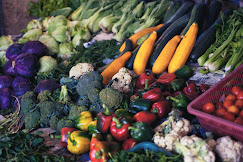Eating healthy is important, and we all know that. But what exactly are you supposed to be eating? How can you tell if a food is healthy or unhealthy? Find out in this article what you need to know about different types of food.
What are Healthy and Unhealthy food?
Healthy foods are typically high in nutrients and low in calories. They tend to be natural, unprocessed and made with whole grains. Examples of healthy foods include fresh fruits and vegetables, lean protein sources like grilled chicken or fish, whole-grain slices of bread or plates of pasta, and yogurt.
Unhealthy foods, on the other hand, are often high in calories and low in nutrients. They tend to be processed, fried, or full of sugar. Examples of unhealthy foods include fast food burgers and fries, chips, sugary sodas or juices, cookies, or cake.
When trying to eat healthier, aim for meals that are mostly made up of healthy foods with just a few unhealthy items thrown in. And when indulging in an unhealthy treat, be sure to balance it out with healthier choices throughout the day.
When it comes to food, there are a lot of different opinions on what is considered healthy and unhealthy. Some people believe that as long as you are eating natural and unprocessed foods, then it is automatically healthy. Others believe that as long as you are not eating too much of any one thing, then you are being healthy. And still, others believe that certain foods, like processed meats and sugary drinks, are so bad for you that they should be avoided at all costs.
The truth is, there is no one-size-fits-all answer to this question. What is considered healthy for one person may not be considered healthy for another? This is because everyone has different dietary needs based on their age, activity level, and overall health.
That said, there are some general guidelines that can help you make healthier choices when it comes to food. In general, fresh fruits and vegetables, whole grains, lean proteins, and low-fat dairy are good choices. Processed foods, sugary drinks, and unhealthy fats should be limited.
Of course, the best way to know if something is truly healthy or not is to talk to your doctor or a registered dietitian. They can help you create a personalized plan that fits your unique needs.
Foods to stay away from
When it comes to making healthy food choices, it’s important to know what to avoid as well as what to include in your diet. Here are some foods that you should stay away from if you’re trying to eat healthily:
-Processed meats: These meats have been treated with chemicals and preservatives to extend their shelf life. They are often high in saturated fat and sodium, which can increase your risk for heart disease and other health problems.
-Sugary drinks: Sodas, sports drinks, and other sugary beverages are empty calories that can contribute to weight gain. They can also cause tooth decay and other health problems.
-Fried foods: Foods that have been fried are usually high in fat and calories. They can also increase your risk for heart disease and other health problems.
-Chips and crackers: These processed snacks are often high in sodium and unhealthy fats. They can also be addictive, making it hard to stick to a healthy diet.
- pastries and desserts: Sweets like cakes, cookies, and ice cream are generally high in sugar and calories. They should be enjoyed in moderation or avoided altogether if you’re trying to eat healthily.
Foods to eat more of
There are countless benefits to eating healthy foods, including reducing your risk for chronic disease, maintaining a healthy weight, and having more energy. However, with the overwhelming amount of information available about what to eat and what not to eat, it can be hard to know where to start. To help you make healthier choices, here is a list of some of the best foods to eat more of:
1. Fruits and vegetables: Filled with vitamins, minerals, and antioxidants, fruits and vegetables should be a cornerstone of any healthy diet. Aim to fill half your plate with these nutrient-rich foods at every meal.
2. Whole grains: Choose whole grain slices of bread and cereals over their refined counterparts to get more fiber and nutrients. whole grains have been linked with numerous health benefits including lower cholesterol levels and a reduced risk for heart disease.
3. Lean proteins: Lean proteins like chicken, fish, tofu, and legumes are excellent sources of protein without the saturated fat found in red meat. Protein is essential for muscle growth and repair, so aim to include it at every meal.
4. Dairy: Dairy products like milk, yogurt, and cheese are good sources of calcium and other essential nutrients like vitamin D. Low-fat or fat-free varieties are best for those watching their waistline.
5. Nuts and seeds: A small handful of nuts or seeds makes a perfect snack or addition to any meal. They're packed with protein.
Conclusion
Unhealthy foods are those that contain high levels of saturated fats, trans fats, refined sugars, and salt. They are often highly processed and can be damaging to your health if consumed in excess. Healthy foods, on the other hand, are typically unprocessed and include whole grains, fresh fruits and vegetables, lean proteins, and healthy fats. While unhealthy foods should be avoided as much as possible, healthy foods should be consumed in moderation to maintain a balanced diet.

.jpg)
.jpg)
.jpg)
.png)
0 Comments